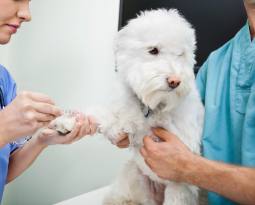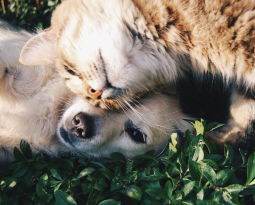As the summer ends and families prepare to return to their regular routines, it’s also a great time to get your dog back on track with obedience training. Whether you have a new puppy or an older dog in need of a refresher, consistent obedience training can help your dog adjust to changes in household routines and become a well-mannered companion. In this blog, we’ll explore the importance of obedience training, the key commands to focus on, and tips for making the process fun and effective.
Why Obedience Training is Essential
Obedience training is not just about teaching your dog to sit or stay; it’s about building a strong, trusting relationship between you and your pet. Here are a few reasons why obedience training is essential:
- Safety: Training your dog to follow commands like “come” or “stay” can prevent them from running into dangerous situations, such as traffic or encounters with aggressive animals.
- Behavior Management: Proper training helps prevent and manage undesirable behaviors like jumping, barking excessively, or chewing on furniture. A well-trained dog is more likely to behave appropriately in different situations.
- Socialization: Training provides opportunities for your dog to interact with other people and animals in a controlled environment, which is key to developing a well-rounded and confident pet.
- Strengthening the Bond: Obedience training fosters communication and understanding between you and your dog. It reinforces your role as the leader and helps your dog feel secure and confident.
Key Commands to Teach Your Dog
When it comes to obedience training, there are several fundamental commands that every dog should learn. These basic commands are the building blocks for more advanced training and help ensure your dog’s safety and good behavior.
- Sit: Teaching your dog to sit on command is one of the most basic and essential commands. It helps your dog learn self-control and can be used to prevent jumping or demanding behavior.
- Stay: The “stay” command teaches your dog to remain in place until you give them permission to move. This command is crucial for keeping your dog safe in various situations, such as when crossing the street or when visitors arrive.
- Come: The “come” command is vital for your dog’s safety, especially when off-leash. It ensures your dog returns to you when called, regardless of distractions.
- Down: Teaching your dog to lie down on command is another way to instill self-control and calm behavior. This command is useful in situations where you need your dog to settle down and remain in place.
- Leave It: The “leave it” command is important for preventing your dog from picking up or eating something dangerous. It teaches your dog to ignore or turn away from objects or food that you don’t want them to have.
- Heel: Walking politely on a leash without pulling is a critical skill for any dog. The “heel” command teaches your dog to walk calmly beside you, making walks more enjoyable for both of you.
Tips for Effective Obedience Training
Obedience training should be a positive and rewarding experience for both you and your dog. Here are some tips to ensure your training sessions are effective and enjoyable:
- Start Early: If you have a puppy, start training as early as possible. Puppies are like sponges, eager to learn and absorb new information. However, it’s never too late to start training an older dog—just be patient and consistent.
- Keep Sessions Short: Dogs have short attention spans, so keep training sessions brief, especially in the beginning. Aim for 10-15 minutes per session, and end on a positive note when your dog successfully completes a command.
- Use Positive Reinforcement: Reward your dog with treats, praise, and affection when they follow a command correctly. Positive reinforcement encourages your dog to repeat the desired behavior and helps them associate training with positive outcomes.
- Be Consistent: Consistency is key in obedience training. Use the same command words and hand signals each time you train. Make sure everyone in the household is on the same page to avoid confusing your dog.
- Gradually Increase Distractions: Start training in a quiet environment with minimal distractions, then gradually introduce more challenging settings, such as a park or a busy street. This helps your dog learn to obey commands in different situations.
- Practice Regularly: Obedience training isn’t a one-time event; it’s an ongoing process. Regular practice reinforces your dog’s learning and helps maintain their skills. Incorporate training into your daily routine, such as asking your dog to sit before meals or to stay while you answer the door.
- Stay Patient: Training takes time, and every dog learns at their own pace. Be patient and avoid getting frustrated if your dog doesn’t pick up a command right away. Celebrate small victories and keep the training experience positive.
Making Obedience Training Fun
Training doesn’t have to be all work and no play. Incorporating fun and games into your training sessions can keep your dog engaged and motivated.
- Turn Training into a Game: Use games like “hide and seek” to reinforce the “come” command, or play tug-of-war with a toy to practice “leave it.” Games make training enjoyable and help your dog learn commands in a playful context.
- Use Puzzle Toys: Puzzle toys that dispense treats can be a great way to reinforce training commands like “sit” or “stay.” These toys challenge your dog’s mind and provide a fun reward for good behavior.
- Join a Training Class: Enrolling in a group training class can be a fun way to socialize your dog and practice obedience commands in a structured setting. It’s also a great opportunity for you to learn new training techniques and connect with other dog owners.
As the new school year begins, it’s the perfect time to focus on obedience training for your dog. Whether you’re starting from scratch or reinforcing existing skills, consistent training will help your dog become a well-mannered, confident, and happy companion. By focusing on key commands, using positive reinforcement, and keeping training fun, you’ll set your dog up for success and strengthen the bond you share. With a little patience and dedication, your dog will be at the top of the class in no time! If your dog needs to get their shots before they head off to school, give us a call today!






